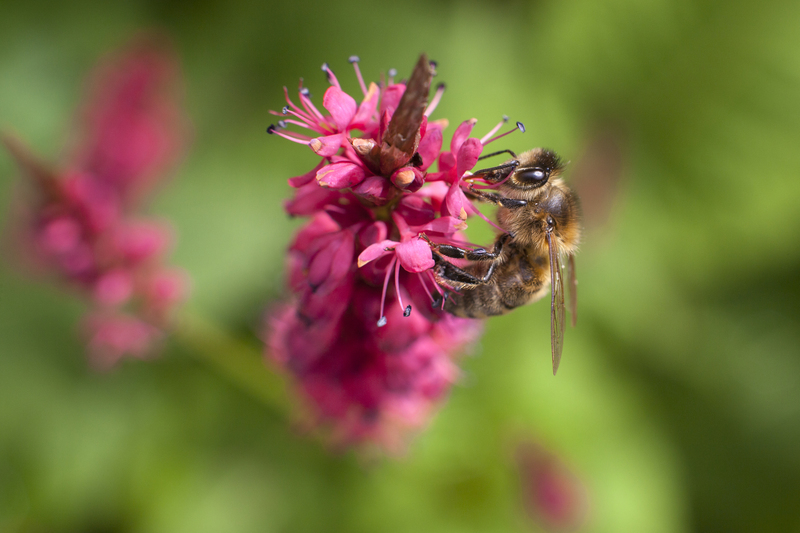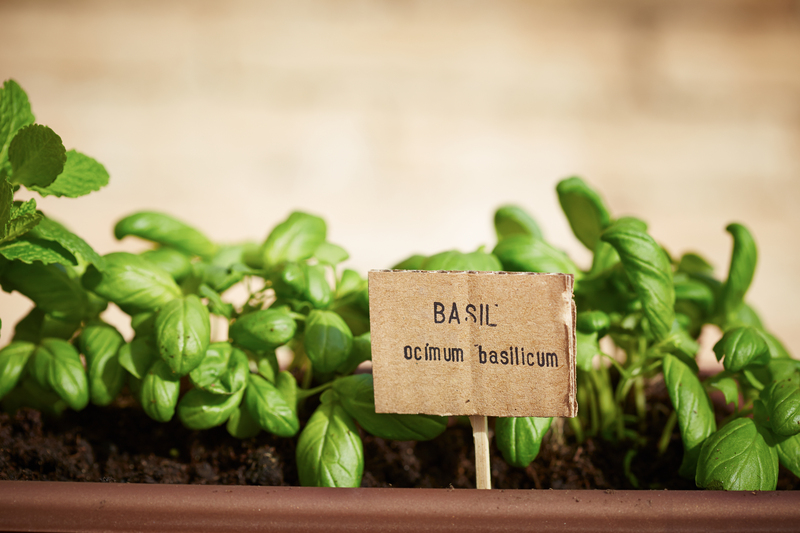Essential Tips for Developing a Safe Garden for Kids
Posted on 28/08/2025
Essential Tips for Developing a Safe Garden for Kids
Creating a safe garden for kids is a rewarding project that not only nurtures their curiosity about nature but also provides a fun and secure environment for play and learning. As parents, caregivers, or educators, optimizing your garden to ensure the health and safety of children is crucial. In this comprehensive guide, we will explore important garden safety tips, innovative garden design ideas, and best practices for childproofing your outdoor space.

Why a Safe Garden for Kids is Important
A child-friendly garden is more than just an outdoor extension of your home; it's a nurturing, stimulating environment that supports children's physical, mental, and emotional development. However, gardens can pose a range of hidden hazards for children--from toxic plants to unsafe structures. Therefore, it's vital to identify and address these risks, creating a haven where children can freely explore, learn, and play.
Planning Your Child-Friendly Garden
Before you break ground, careful planning is key to developing a secure garden for kids. Here are some initial considerations:
- Assess the space: Identify potential hazards like thorny bushes, uneven ground, or areas where children could become trapped.
- Accessibility: Design pathways that are wide, even, and free of obstructions--ideal for little feet or even wheelchairs and strollers.
- Age appropriateness: Cater the garden's features, games, and plants to the specific ages and interests of your children.
Selecting Safe Plants for Children
One of the most critical aspects of a safe garden for kids is plant selection. Some plants can be toxic if ingested or cause skin irritation. Here's how to create a child-safe plant environment:
- Avoid toxic plants: Steer clear of harmful plants like foxglove, oleander, yew, and deadly nightshade. Check plant toxicity using reputable online lists or consult your local nursery.
- Choose robust, non-toxic plants: Safe choices include sunflowers, marigolds, snapdragons, pansies, and herbs such as basil and mint.
- Opt for sensory plants: Include varieties that stimulate the senses (e.g., lavender for scent, lamb's ear for touch, strawberries for tasting), making the garden more engaging.
Ensuring Water Safety
Water features can add beauty and tranquility to a garden but require special attention when designing a safe outdoor area for children. Drowning is a leading cause of accidental injury for young children, so follow these tips:
- Avoid deep ponds: If you want water elements, consider shallow, securely covered features such as bird baths or splash pads.
- Supervise at all times: Never leave children unattended near water, no matter how shallow.
- Secure water barrels and tanks: Ensure all large containers of water are tightly covered and not easily accessible.
Fencing and Boundaries
A secure perimeter is essential for a child-safe yard or garden. Fencing prevents kids from wandering away and keeps unwanted animals out. Consider the following:
- Install proper fencing: The fence should be at least four feet high and free from gaps large enough for a child to slip through.
- Child-safe gates: Fit self-closing and self-latching gates that children cannot open on their own.
- Regular checks: Inspect boundaries for holes, rot, or damage that could create escape routes or cause injury.
Creating Safe Play Zones
Dedicate specific areas of your garden for active play, quiet exploration, and learning. This will allow children to roam freely, but within safe limits:
- Level play surfaces: Make sure play zones are on flat ground to minimize trips and falls.
- Install soft landing: Use mulch, rubber mats, or sand to cushion falls around swings, slides, or climbing frames.
- Sun protection: Create shaded areas with trees, pergolas, or canopies to shield sensitive skin from UV exposure.
Childproofing Tools and Equipment
Gardening involves adult tools and equipment that may interest curious hands. Ensuring these items are safely stored will significantly reduce risk in your kids' garden haven:
- Store tools securely: Keep shears, spades, rakes, and chemicals locked in a shed with a child-proof lock.
- Choose child-sized tools for little helpers: When involving children in gardening tasks, provide them with small, blunt, age-appropriate tools.
- Avoid harmful substances: Opt for organic or non-toxic fertilizers and pest controls whenever possible.
Innovative Ideas for a Safe Kids' Garden
Incorporate Edible Gardens
A child-safe edible garden delights kids and gives them the chance to learn about nutrition, responsibility, and the food cycle:
- Plant easy-to-grow vegetables: Carrots, cherry tomatoes, peas, and strawberries are favorites for little gardeners.
- Use raised beds: Raised beds help children reach plants more easily and provide greater control over soil and weeds.
- Label everything: Teach children plant names with bright, durable markers, and encourage them to recognize safe edibles.
Design for Exploration and Creativity
Stimulate imagination and learning by integrating features that spark creativity:
- Willow tunnels and teepees: Construct small, living playhouses using fast-growing willows for a magical hideout.
- Fairy or bug gardens: Dedicate a spot for miniature houses, stones, and plants to attract beneficial insects and inspire storytelling.
- Paths and stepping stones: Curved, sensory-friendly paths encourage movement and discovery, while teaching navigation skills.
Wildlife-Friendly but Safe
Introduce your children to local wildlife while ensuring that encounters are educational and not hazardous:
- Insect hotels and bird feeders: Attract birds, bees, and butterflies with safe, well-placed feeders and bug habitats.
- Secure compost areas: Keep compost bins enclosed and away from children's play space to deter vermin and avoid contact with potential pathogens.
- Observe safely: Teach children to look but not touch unknown creatures and show how to identify harmless insects.
Garden Safety Maintenance Checklist
Even the best-designed safe garden for children needs regular maintenance. Schedule frequent safety checks using this handy list:
- Inspect play equipment for wear, loose bolts, or splinters.
- Check plant health for signs of disease, pests, or overgrowth that could create tripping hazards.
- Keep paths clear of obstacles like tools, hoses, or debris.
- Monitor fences and gates to maintain their integrity.
- Refresh mulch or safety surfaces under play equipment regularly.
First Aid Preparedness
No matter how childproof your garden, it's wise to be prepared for minor accidents:
- Keep a well-stocked first aid kit nearby, with items like plasters, antiseptic wipes, and tweezers.
- Learn basic first aid skills for cuts, bruises, bites, and stings.
- Teach children how to ask for help in case of emergencies.
Educating Kids About Garden Safety
Building a safe backyard for children also means equipping them with the knowledge and respect for nature that will help them avoid harm:
- Set garden rules: Establish clear boundaries and reinforce the rules on tool use, plant handling, and staying within sight.
- Identify and teach about dangerous plants/insects: Walk children around the garden, pointing out which plants and bugs are off-limits.
- Model safe behavior: Show children how to use tools properly, put things away, and wash hands after gardening.
Involve Kids in Garden Planning
When children participate in creating their environment, they feel a greater sense of ownership and responsibility. Let them help:
- Choose plants or seeds to grow.
- Design their own mini-garden patches.
- Paint plant markers or decorate stepping stones.

Seasonal Considerations for Safe Gardens
The safety needs of your child-friendly garden change with the seasons:
- Spring: Watch for slippery mud and sharp debris after winter. Ensure new growth doesn't obstruct pathways.
- Summer: Protect against sunburn with hats, sunscreen, and shade. Check for stinging insects or plants.
- Autumn: Clear fallen leaves and branches to avoid slips. Secure ponds with netting as they can become obscured.
- Winter: Remove snow build-up from play equipment and eliminate ice patches from walkways.
Conclusion: Making Your Garden a Safe Haven for Kids
A well-designed safe garden for kids offers limitless opportunities for learning, exploration, and healthy play. By taking proactive measures--from selecting the right plants and setting up boundaries to ongoing education and supervision--you create a vibrant space where children can enjoy the outdoors with peace of mind.
With these essential tips for developing a safe garden for children, your garden will inspire, nurture, and protect the next generation while giving you the confidence to let them enjoy all that nature has to offer. Begin your journey today and turn your outdoor space into a secure, exciting, and nurturing haven for young explorers!

